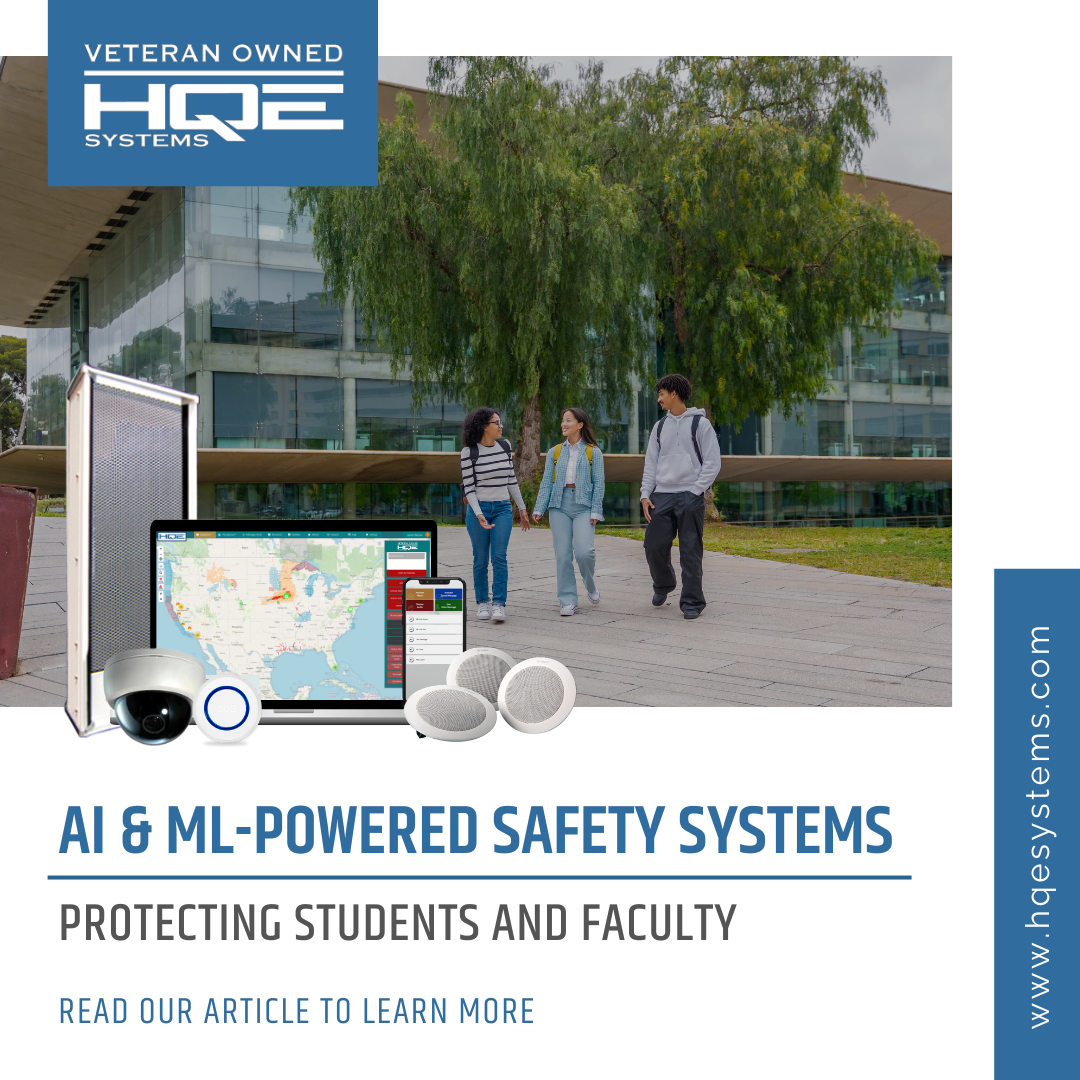Is Your School Campus Equipped with the Latest Life Safety and Electronic Security Solutions with Revolutionary Artificial Intelligence and Machine Learning Capabilities?
The Growing Threat of Gun Violence on Campuses
Campus safety has become a paramount concern for educational institutions worldwide. With increasing threats such as gun violence, fires, and natural disasters, it is essential for schools and universities to adopt advanced security measures. In this blog, we will explore the importance of campus safety, focusing on recent incidents that highlight the urgency of the issue. We will then discuss how innovative AI and ML technologies can be integrated into campus safety solutions to protect students and staff effectively.
The Threat of Guns on Campus
Gun violence in schools is a tragic reality that has garnered significant attention in recent years. One poignant example is the shooting at Garfield High School in Seattle on January 19, 2024, where a teenager was fatally shot near the school’s teen center (11Alive). This incident underscores the critical need for enhanced security measures to detect and prevent such threats. In this section, we will discuss the prevalence of gun violence in schools, the impact on students and staff, and the necessity for advanced security systems.
tragic reality that has garnered significant attention in recent years. One poignant example is the shooting at Garfield High School in Seattle on January 19, 2024, where a teenager was fatally shot near the school’s teen center (11Alive). This incident underscores the critical need for enhanced security measures to detect and prevent such threats. In this section, we will discuss the prevalence of gun violence in schools, the impact on students and staff, and the necessity for advanced security systems.
Gun violence on campuses has become an increasingly alarming issue, with numerous incidents reported across the United States and globally. The Garfield High School shooting is a stark reminder of the dangers that students face daily. This tragic event has raised awareness about the urgent need for more effective security protocols in educational settings.
The prevalence of gun violence in schools is distressing. According to the Gun Violence Archive, there were over 50 school shootings in the United States in 2023 alone, resulting in numerous injuries and fatalities. These incidents disrupt the learning environment and instill fear among students, parents, and educators. The psychological impact on students can be profound, leading to anxiety, depression, and a diminished sense of safety within the school environment.
The impact of gun violence extends beyond the immediate physical harm to victims. Students who witness or are aware of such incidents often experience long-term emotional and psychological effects. The fear of potential violence can create a hostile and unsafe atmosphere, hindering students’ ability to focus on their studies and participate in school activities. Teachers and staff also face increased stress and anxiety, affecting their performance and overall well-being.
Given these realities, the necessity for advanced security systems in schools is evident. Traditional security measures, such as metal detectors and security personnel, while helpful, are often insufficient in preventing gun violence. These methods can be reactive rather than proactive, addressing threats only after they have materialized.
This is where Artificial Intelligence (AI) and Machine Learning (ML) technologies come into play. By integrating AI and ML into campus security systems, schools can significantly enhance their ability to detect and prevent gun-related threats. AI-powered surveillance cameras, for example, can continuously monitor campus areas and use advanced image recognition algorithms to identify firearms. Upon detecting a potential threat, these systems can immediately alert security personnel and initiate lockdown procedures, reducing response times and potentially saving lives.
Intelligence (AI) and Machine Learning (ML) technologies come into play. By integrating AI and ML into campus security systems, schools can significantly enhance their ability to detect and prevent gun-related threats. AI-powered surveillance cameras, for example, can continuously monitor campus areas and use advanced image recognition algorithms to identify firearms. Upon detecting a potential threat, these systems can immediately alert security personnel and initiate lockdown procedures, reducing response times and potentially saving lives.
Moreover, ML algorithms can analyze vast amounts of data to identify patterns and predict potential threats. By examining historical data on school shootings, these systems can recognize early warning signs and suggest preventive measures. For instance, unusual behavior patterns or social media activity indicating a potential threat can be flagged for further investigation.
Implementing these advanced technologies also involves ensuring that students, staff, and parents are aware of and understand the new security measures. Training sessions and informational workshops can help the school community feel more secure and prepared to respond to potential threats. Additionally, involving students and staff in the development and implementation of these systems can foster a sense of ownership and responsibility towards maintaining a safe school environment.
In conclusion, the threat of gun violence on campuses necessitates the adoption of advanced security measures. The tragic shooting at Garfield High School is a sobering reminder of the dangers that exist and the urgent need for effective solutions. By integrating AI and ML technologies into campus security systems, schools can move towards a more proactive and comprehensive approach to safety, ensuring that students and staff can focus on education without fear.
The Danger of Fires in Schools
Fires pose a severe threat to campus safety, with the potential to cause significant harm and disruption. The devastating fire at a school dormitory in China on January 19, 2024, which resulted in numerous casualties, highlights the urgent need for robust fire detection and prevention systems (WISH-TV). This section will explore the risks associated with fires in educational institutions, recent incidents, and the importance of integrating advanced fire safety technologies to protect lives and property.
Fires in educational institutions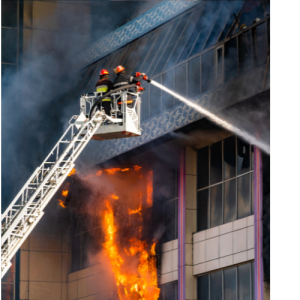 are not uncommon, and their consequences can be catastrophic. In the case of the January 2024 dormitory fire in China, the blaze spread rapidly, trapping students and staff inside the building. The incident resulted in numerous fatalities and injuries, drawing attention to the critical need for improved fire safety measures in schools and universities (WISH-TV). Such incidents underscore the importance of having efficient and reliable fire detection systems that can provide early warnings and facilitate swift evacuations.
are not uncommon, and their consequences can be catastrophic. In the case of the January 2024 dormitory fire in China, the blaze spread rapidly, trapping students and staff inside the building. The incident resulted in numerous fatalities and injuries, drawing attention to the critical need for improved fire safety measures in schools and universities (WISH-TV). Such incidents underscore the importance of having efficient and reliable fire detection systems that can provide early warnings and facilitate swift evacuations.
The risks associated with fires in educational institutions are multifaceted. Buildings often house large numbers of students, making evacuation challenging. Additionally, many schools have outdated infrastructure and fire safety systems that may not meet current safety standards. Inadequate fire safety measures can lead to significant property damage, loss of life, and long-term psychological trauma for survivors.
One of the primary reasons fires in schools are so dangerous is the potential for rapid spread. Many educational buildings are constructed with materials that, while cost-effective, may not be fire-resistant. Moreover, classrooms and dormitories often contain flammable materials, such as paper, books, and bedding, which can fuel a fire and increase its intensity. Inadequate fire doors and compartmentalization can further exacerbate the problem, allowing fires to spread quickly from one area to another.
Recent incidents around the world have highlighted the need for robust fire safety systems. For instance, the tragic fire at a school in Kemerovo, Russia, in 2018, resulted in the deaths of 41 children and teachers. Investigations revealed that the building lacked proper fire alarms and sprinkler systems, which could have saved lives by providing early warnings and suppressing the fire (WISH-TV). These incidents serve as stark reminders of the importance of modern fire detection and prevention technologies.
To mitigate the risks associated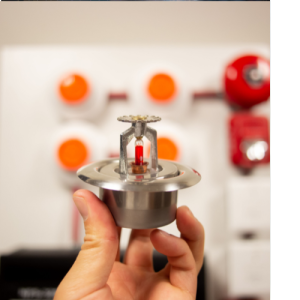 with fires, educational institutions must invest in advanced fire safety technologies. Integrating Artificial Intelligence (AI) and Machine Learning (ML) into fire detection systems can significantly enhance their effectiveness. AI-powered sensors can detect early signs of fire, such as smoke and heat, with greater accuracy and speed than traditional systems. These sensors can continuously monitor the environment and provide real-time data to a central monitoring system.
with fires, educational institutions must invest in advanced fire safety technologies. Integrating Artificial Intelligence (AI) and Machine Learning (ML) into fire detection systems can significantly enhance their effectiveness. AI-powered sensors can detect early signs of fire, such as smoke and heat, with greater accuracy and speed than traditional systems. These sensors can continuously monitor the environment and provide real-time data to a central monitoring system.
Machine Learning algorithms can analyze historical fire data to identify patterns and predict potential risks. By understanding these patterns, schools can implement preventive measures, such as regular maintenance checks and upgrades to fire safety equipment. Additionally, ML can help optimize evacuation plans by simulating various fire scenarios and identifying the most efficient routes for safe evacuation.
Another critical component of fire safety is the integration of automated response systems. In the event of a fire, these systems can automatically activate sprinklers, close fire doors, and alert emergency services. Automated response systems can also guide occupants to the safest exits using visual and auditory signals, reducing confusion and panic during evacuations.
Educational institutions should also conduct regular fire drills and training sessions for students and staff. These drills help familiarize everyone with evacuation procedures and ensure that they know how to respond in case of a fire. Regular training sessions can also teach students and staff how to use fire safety equipment, such as fire extinguishers and alarms.
In conclusion, fires pose a significant threat to campus safety, as demonstrated by recent incidents like the dormitory fire in China. To protect lives and property, educational institutions must adopt advanced fire safety technologies that leverage AI and ML. These technologies can provide early detection, accurate risk predictions, and efficient evacuation plans, ensuring that schools are prepared to respond effectively to fire emergencies.
The Risk of Earthquakes for Student Safety
Earthquakes are unpredictable natural disasters that can cause widespread damage and pose a significant risk to campus safety, particularly for students. Recent earthquakes, such as those that struck in 2024, have demonstrated the destructive potential of these events on educational institutions. This section will discuss the risks associated with earthquakes, the impact on student safety, and the need for effective earthquake preparedness and response strategies.
The earthquake that hit Taiwan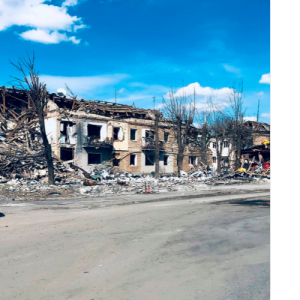 on April 3, 2024, with a magnitude of 7.4, resulted in at least 18 deaths and over 1,100 injuries. The quake caused significant damage to buildings and infrastructure, including critical educational facilities. The Ministry of Education in Taiwan reported damages to 434 schools, amounting to $14.66 million in losses. The event highlighted the importance of resilient infrastructure and strict building codes in mitigating earthquake damage to protect students (Center for Disaster Philanthropy).
on April 3, 2024, with a magnitude of 7.4, resulted in at least 18 deaths and over 1,100 injuries. The quake caused significant damage to buildings and infrastructure, including critical educational facilities. The Ministry of Education in Taiwan reported damages to 434 schools, amounting to $14.66 million in losses. The event highlighted the importance of resilient infrastructure and strict building codes in mitigating earthquake damage to protect students (Center for Disaster Philanthropy).
Similarly, a magnitude 4.8 earthquake struck New Jersey on April 5, 2024, causing structural damage and widespread disruptions. Although the damage was relatively minor compared to larger earthquakes, the incident underscored the need for preparedness even in regions not typically associated with high seismic activity. Ensuring student safety during such events is crucial. One school district in the affected area had to activate a safety response protocol to ensure the well-being of its students and staff (WVIA).
Japan, known for its stringent building regulations and preparedness strategies, also experienced a significant earthquake on New Year’s Day 2024. The 7.6 magnitude quake resulted in over 200 deaths and extensive property damage. However, Japan’s investment in resilient building strategies and early warning systems minimized the overall impact, demonstrating the effectiveness of such measures in safeguarding students (World Economic Forum).
While resilient infrastructure is crucial, having the time to react during an earthquake is equally important for student safety. Schools need advanced warning systems that can detect seismic activity early and provide critical seconds or minutes for evacuation. These early warnings can be the difference between life and death, allowing students and staff to move to safer locations before the shaking starts.
Artificial Intelligence (AI) and Machine Learning (ML) technologies can play a crucial role in enhancing earthquake preparedness by providing real-time monitoring and early detection. AI-powered seismic monitoring systems can detect early signs of seismic activity and provide timely alerts, allowing for quicker evacuations and emergency responses. For example, AI algorithms can analyze data from sensors placed in and around school buildings to predict the intensity and impact of an impending earthquake.
Machine Learning (ML) technologies can play a crucial role in enhancing earthquake preparedness by providing real-time monitoring and early detection. AI-powered seismic monitoring systems can detect early signs of seismic activity and provide timely alerts, allowing for quicker evacuations and emergency responses. For example, AI algorithms can analyze data from sensors placed in and around school buildings to predict the intensity and impact of an impending earthquake.
Machine Learning models can analyze historical earthquake data to identify patterns and predict potential impacts. By understanding these patterns, schools can implement preventive measures and optimize evacuation routes, ensuring that students and staff can evacuate safely and efficiently. ML can also be used to simulate various earthquake scenarios, helping schools develop and refine their emergency response plans. This ensures that students and staff are well-prepared and know exactly what to do when an earthquake strikes.
One critical component of an effective response system is an integrated communication network. Advanced communication systems can disseminate early warnings and real-time updates to students, staff, and emergency responders. These systems can use multiple channels such as SMS, email, and public address systems to ensure that everyone receives timely information, reducing panic and improving the effectiveness of evacuation procedures.
In addition to technological solutions, educational institutions should conduct regular earthquake drills and training sessions to prepare students and staff for potential emergencies. These drills help ensure that everyone knows the proper procedures to follow during an earthquake, reducing panic and confusion. Furthermore, schools should have comprehensive emergency plans in place, including clear evacuation routes and designated safe areas.
Post-earthquake recovery is another critical aspect of preparedness. Schools must have plans for providing immediate assistance to affected individuals, such as medical care, food, and shelter. Long-term recovery strategies should focus on repairing damaged infrastructure and providing psychological support to students and staff who may experience trauma from the event.
In conclusion, earthquakes pose a significant risk to student safety, as evidenced by recent incidents in Taiwan, New Jersey, and Japan. Educational institutions must invest in resilient infrastructure and advanced technologies to mitigate these risks. By integrating AI and ML into earthquake preparedness strategies, schools can enhance their ability to detect and respond to seismic events, ensuring the safety and well-being of students and staff.
AI and ML in Gun Detection and Response
AI and ML technologies can significantly enhance the ability to detect and respond to gun-related threats on campus. HQE Systems’ solutions utilize advanced algorithms to monitor surveillance feeds and detect firearms in real-time. Upon identifying a potential threat, the system can immediately alert security personnel and initiate lockdown procedures. This section will detail how HQE Systems’ AI-powered surveillance cameras and ML algorithms improve gun detection accuracy, reduce false alarms, and enable proactive threat prevention.
Enhancing Detection Accuracy
HQE Systems’ AI-powered surveillance cameras are equipped with advanced image recognition capabilities that can accurately identify firearms. These systems continuously monitor video feeds from cameras installed across the campus, analyzing each frame for potential threats. When a firearm is detected, the AI system processes the image, verifying the threat and determining the appropriate response. This real-time analysis allows for immediate action, significantly reducing the time between threat detection and response.
surveillance cameras are equipped with advanced image recognition capabilities that can accurately identify firearms. These systems continuously monitor video feeds from cameras installed across the campus, analyzing each frame for potential threats. When a firearm is detected, the AI system processes the image, verifying the threat and determining the appropriate response. This real-time analysis allows for immediate action, significantly reducing the time between threat detection and response.
For instance, HQE Systems’ AI algorithms can distinguish between a firearm and objects that might be mistaken for weapons, such as tools or toys. This precision helps in reducing false alarms, ensuring that security personnel can focus on genuine threats. According to a study by the U.S. Department of Homeland Security, AI-driven systems can identify firearms with an accuracy rate of over 90%, significantly higher than traditional surveillance methods.
Reducing False Alarms
One of the critical advantages of using AI and ML in gun detection is the reduction of false alarms. Traditional surveillance systems often rely on human operators to monitor video feeds, which can lead to errors due to fatigue or lack of attention. HQE Systems’ AI systems, on the other hand, operate continuously and consistently, analyzing every frame with the same level of scrutiny.
Machine Learning algorithms play a crucial role in this process by learning from past data and improving their detection capabilities over time. These algorithms can be trained to recognize specific patterns and behaviors associated with firearm use, such as the way a person holds or moves with a weapon. By continuously updating and refining these patterns, ML models become increasingly accurate, further minimizing the likelihood of false positives.
Integrated Response Systems
When a firearm is detected, HQE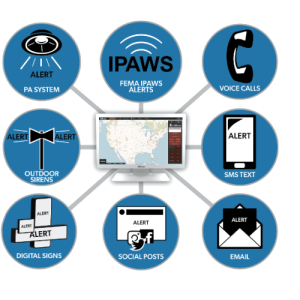 Systems’ integrated response systems, including their SiSA (System Integrated Situational Awareness) software, can automatically trigger a series of actions designed to protect students and staff. These actions may include locking down buildings, notifying law enforcement, and providing real-time updates to emergency response teams. AI-driven systems can also guide individuals to safe locations and communicate instructions through public address systems, mobile alerts, and digital signage.
Systems’ integrated response systems, including their SiSA (System Integrated Situational Awareness) software, can automatically trigger a series of actions designed to protect students and staff. These actions may include locking down buildings, notifying law enforcement, and providing real-time updates to emergency response teams. AI-driven systems can also guide individuals to safe locations and communicate instructions through public address systems, mobile alerts, and digital signage.
For instance, in a school setting, HQE Systems’ AI system can instantly lock classroom doors and send alerts to teachers’ and students’ mobile devices, instructing them on the best course of action. This rapid and coordinated response can save lives by minimizing exposure to the threat and ensuring that everyone knows how to react.
In conclusion, HQE Systems’ AI and ML technologies, integrated with their SiSA software, offer significant improvements in detecting and responding to gun-related threats on campus. By enhancing detection accuracy, reducing false alarms, and enabling proactive threat prevention, these advanced systems provide a comprehensive solution to ensure the safety and security of educational environments. Integrating these technologies into existing security protocols can create a safer campus environment, ultimately protecting students, staff, and visitors from potential harm
Enhancing Fire Safety with AI and ML
Effective fire detection and prevention are critical components of campus safety. HQE Systems employs AI and ML to enhance fire safety measures through early detection and rapid response. Our AI-driven fire detection systems use advanced sensors and algorithms to identify signs of fire, such as smoke and heat, with greater accuracy and speed than traditional systems. This section will explain how ML models analyze data from previous fire incidents to improve predictive capabilities and provide early warnings, ultimately ensuring the safety of all individuals on campus.
Advanced Fire Detection Systems
HQE Systems leverages AI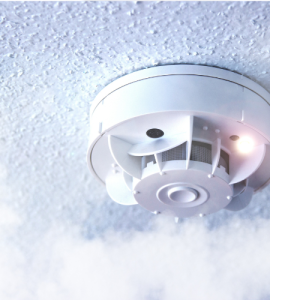 technology to significantly improve fire detection accuracy. Traditional fire detection systems often rely on basic smoke detectors and manual alarms, which can be slow to respond and prone to false alarms. In contrast, AI-driven systems utilize a network of advanced sensors capable of detecting subtle changes in the environment, such as increases in temperature, presence of smoke, or specific gases associated with combustion. These sensors feed data into AI algorithms that can quickly identify potential fires with a high degree of accuracy.
technology to significantly improve fire detection accuracy. Traditional fire detection systems often rely on basic smoke detectors and manual alarms, which can be slow to respond and prone to false alarms. In contrast, AI-driven systems utilize a network of advanced sensors capable of detecting subtle changes in the environment, such as increases in temperature, presence of smoke, or specific gases associated with combustion. These sensors feed data into AI algorithms that can quickly identify potential fires with a high degree of accuracy.
For example, an AI-based fire detection system can analyze data from thermal imaging cameras placed strategically around the campus. These cameras capture real-time thermal data, and the AI algorithms continuously monitor this data for any anomalies that indicate a potential fire. This approach allows for the rapid identification of fire hazards, often before visible smoke or flames are present, enabling quicker response times and reducing the risk of widespread damage.
Machine Learning for Predictive Capabilities
Machine Learning (ML) models play a crucial role in enhancing the predictive capabilities of fire detection systems. By analyzing historical data from previous fire incidents, ML algorithms can identify patterns and conditions that precede fire outbreaks. This analysis includes factors such as weather conditions, building occupancy levels, and the presence of flammable materials.
For instance, ML models can learn that certain environmental conditions, like low humidity combined with high temperatures, increase the likelihood of fires. With this knowledge, the system can provide early warnings when these conditions are detected, allowing for preventive measures to be taken. This predictive capability is particularly valuable in environments like school campuses, where the timely evacuation of students and staff can prevent injuries and save lives.
Integrated Early Warning Systems
HQE Systems’ fire safety solutions include integrated early warning systems that leverage AI and ML technologies to provide real-time alerts and actionable information to emergency response teams. When the AI-driven sensors detect a potential fire, the system can instantly notify campus security, local fire departments, and other relevant authorities. This rapid communication ensures that emergency responders are dispatched without delay.
solutions include integrated early warning systems that leverage AI and ML technologies to provide real-time alerts and actionable information to emergency response teams. When the AI-driven sensors detect a potential fire, the system can instantly notify campus security, local fire departments, and other relevant authorities. This rapid communication ensures that emergency responders are dispatched without delay.
Moreover, these early warning systems can provide detailed information about the fire’s location, intensity, and potential spread. This information is crucial for coordinating effective response efforts and minimizing damage. For example, if a fire is detected in a specific building, the system can automatically trigger fire suppression systems in that area, initiate evacuation protocols, and guide occupants to the nearest exits using digital signage and mobile alerts.
Earthquake Preparedness and Response
Earthquakes pose unique challenges to campus safety due to their unpredictable nature and potential for widespread damage. HQE Systems offers AI and ML-based solutions to enhance earthquake preparedness and response, ensuring that educational institutions are well-equipped to handle such emergencies.
Seismic Activity Monitoring
HQE Systems’ seismic activity monitoring systems use advanced AI algorithms to detect early signs of seismic activity. These AI-driven systems can analyze minute vibrations and geological data to predict the onset of an earthquake. This early detection capability is crucial for providing timely alerts to campus security and emergency management teams, allowing them to take immediate action to protect students and staff.
Predictive Analysis with Machine Learning
Machine Learning (ML) models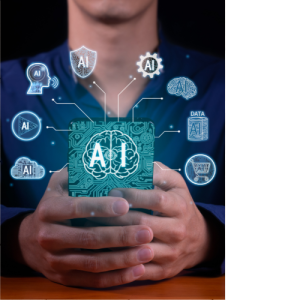 analyze historical earthquake data to identify patterns and predict potential impacts. By examining data from past earthquakes, including magnitude, depth, and location, these ML models can forecast the likelihood of future seismic events and their potential effects on campus infrastructure. This predictive analysis enables schools to implement targeted reinforcement measures, such as retrofitting buildings to withstand seismic activity, thereby reducing the risk of structural damage and injuries.
analyze historical earthquake data to identify patterns and predict potential impacts. By examining data from past earthquakes, including magnitude, depth, and location, these ML models can forecast the likelihood of future seismic events and their potential effects on campus infrastructure. This predictive analysis enables schools to implement targeted reinforcement measures, such as retrofitting buildings to withstand seismic activity, thereby reducing the risk of structural damage and injuries.
For example, ML models can reveal which buildings on campus are most at risk during an earthquake based on their construction materials and design. With this information, school administrators can prioritize upgrades and maintenance for these structures to ensure they meet current earthquake safety standards.
Effective Evacuation Plans
A critical aspect of earthquake preparedness is having effective evacuation plans in place. HQE Systems’ solutions assist in developing and optimizing these plans through simulation and analysis. By using AI and ML, schools can simulate various earthquake scenarios to determine the most efficient evacuation routes and procedures. These simulations take into account the layout of the campus, the number of occupants, and the specific vulnerabilities of each building.
The system can also provide real-time guidance during an earthquake, directing students and staff to the safest exits and assembly points. This real-time data is invaluable in ensuring a swift and orderly evacuation, minimizing the risk of injuries and chaos.
Automated Emergency Protocols
During an earthquake, rapid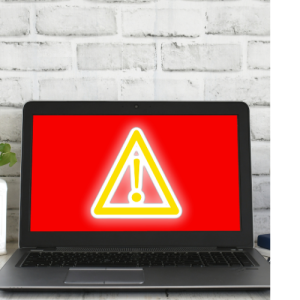 response is essential. HQE Systems’ integrated solutions automatically initiate emergency protocols to ensure the safety of everyone on campus. When seismic activity is detected, the system can automatically:
response is essential. HQE Systems’ integrated solutions automatically initiate emergency protocols to ensure the safety of everyone on campus. When seismic activity is detected, the system can automatically:
- Activate emergency alarms: Alerting everyone on campus to the imminent danger.
- Lock down critical areas: Securing hazardous zones to prevent access.
- Shut down utilities: Turning off gas lines and electrical systems to prevent fires and other hazards.
- Dispatch emergency notifications: Sending alerts via SMS, email, and public address systems to provide instructions and updates.
These automated responses are designed to mitigate the impact of the earthquake and protect lives by ensuring that emergency procedures are executed swiftly and efficiently.
Comprehensive Safety for Educational Institutions with AI and ML
Ensuring the safety of students and staff on campus is a top priority for educational institutions. HQE Systems integrates advanced AI and ML technologies to address threats such as gun violence, fires, and earthquakes. Our Smart Integrated Security Architecture (SiSA) offers comprehensive protection by enhancing detection accuracy, reducing false alarms, and enabling proactive prevention and rapid response. As these risks persist, the adoption of AI and ML in campus safety systems becomes increasingly crucial. HQE Systems is dedicated to leveraging these technologies to enhance security and safeguard the well-being of students and staff, creating a safer learning environment.
HQE Systems is a certified Veteran Owned Company. For more information about HQE Systems Inc. and its emergency management, electronic security, and integration solutions, please visit www.hqesystems.com.

Contact: David Ditto (Early Warning Systems Subject Matter Expert)
Email: David.Ditto@hqesystems.com
Phone Number: (843) 872-7020
____________________
HQE Systems, Inc. | HQE is a Minority-Owned Service Disabled Veteran Owned Small Business (SDVOSB) providing full solutions for: Mass Notification Systems, Electronic Security Systems, Software Development Services, Contract Support, and Prototyping Services. As a brand-agnostic solutions provider, HQE prides itself in providing the BEST solution for the project. HQE possesses over 30+ factory certifications and reseller licenses to ensure our clients receive the highest quality service at the ideal budget. HQE can provide full design, installation, integrations, upgrades, and long-term maintenance support for any size and scope project.

